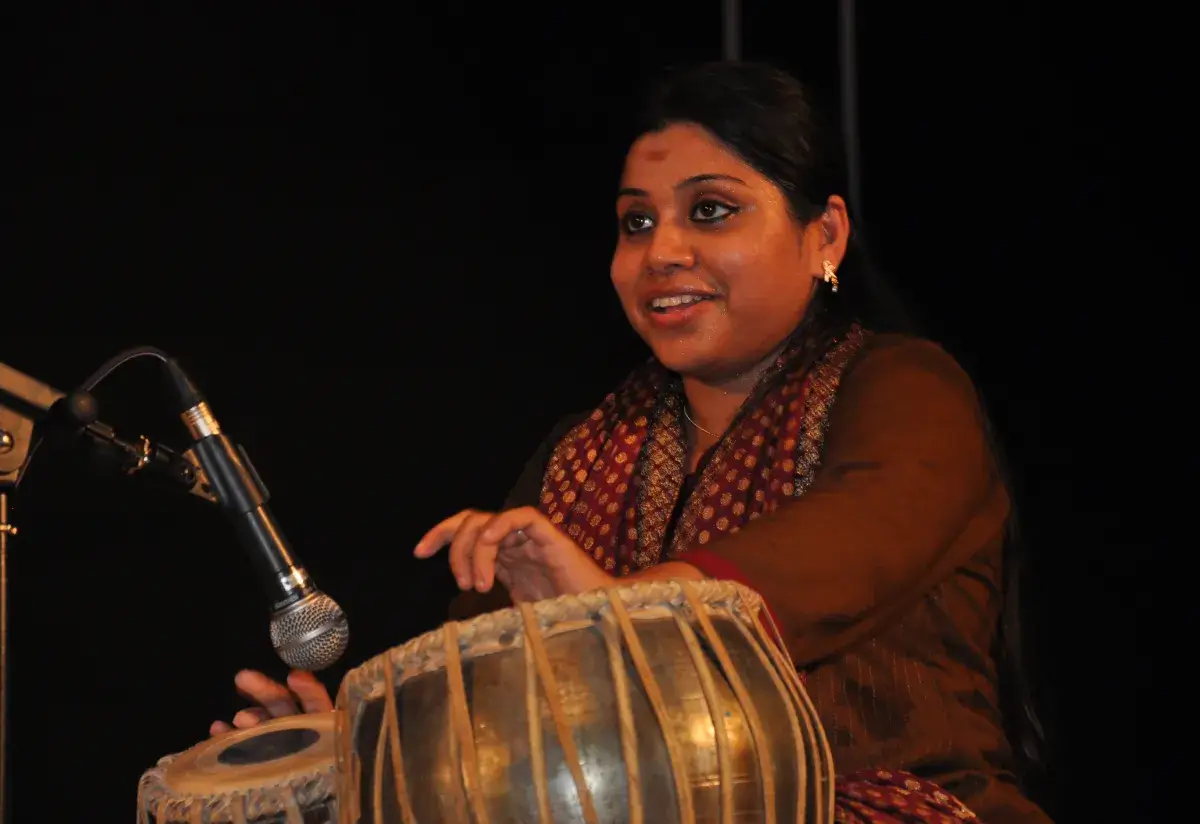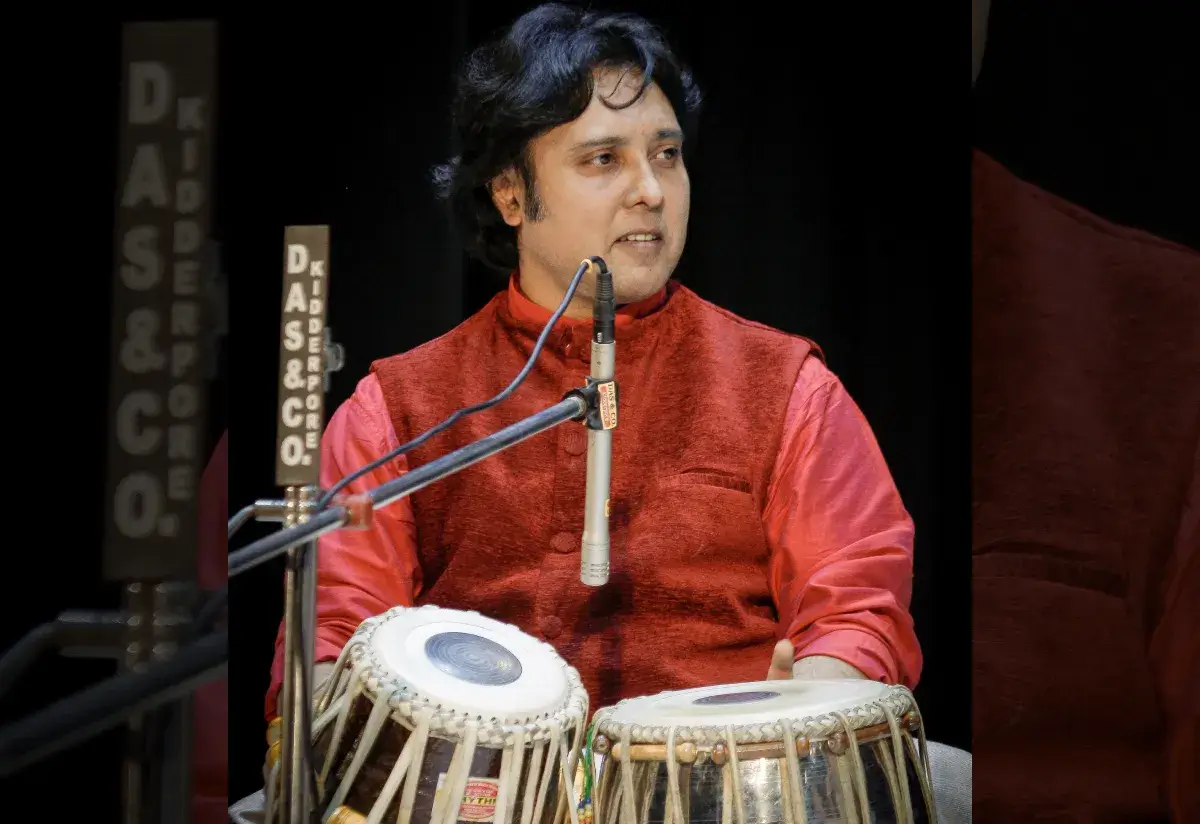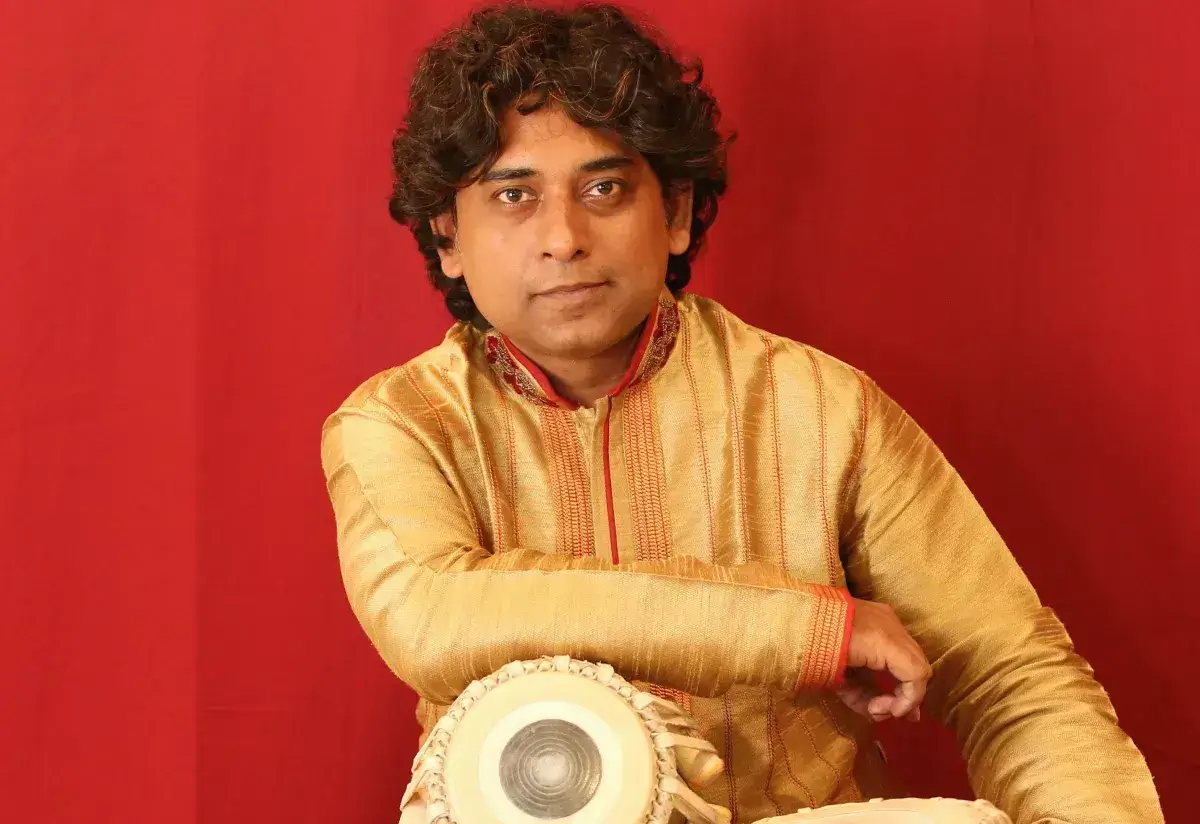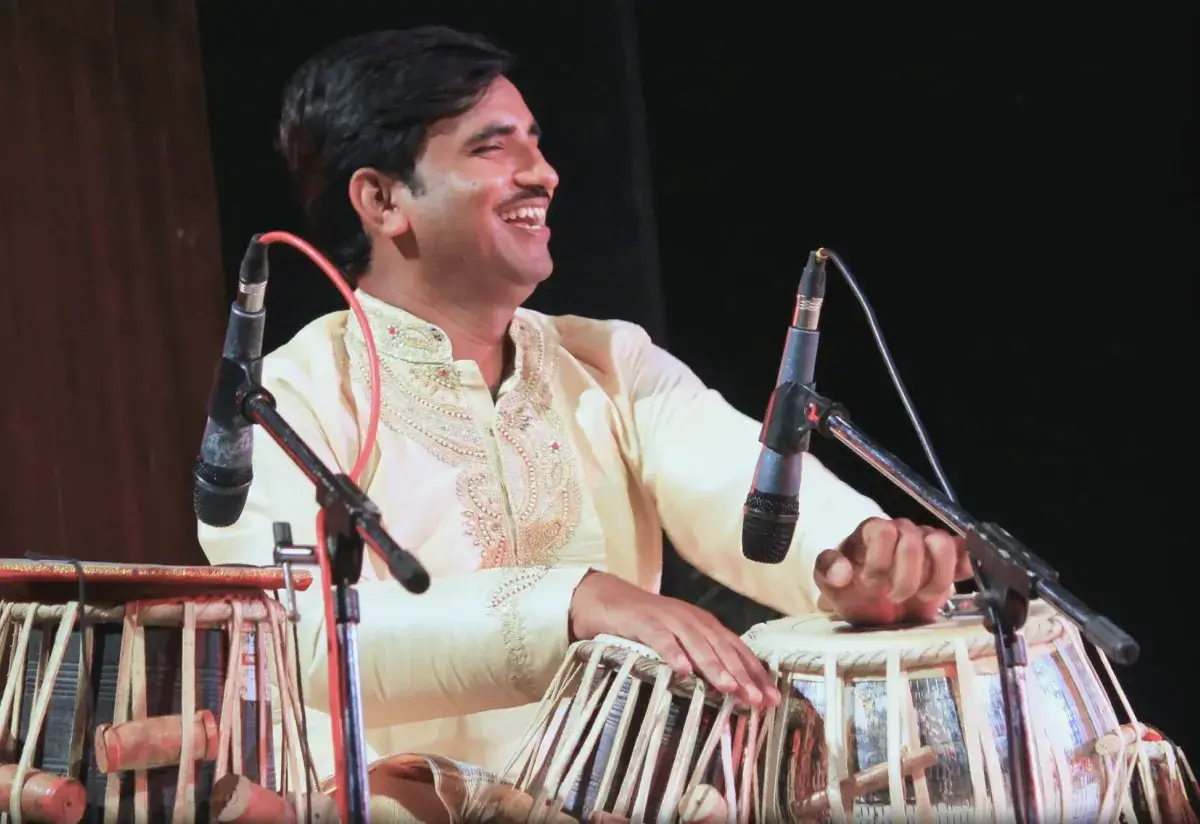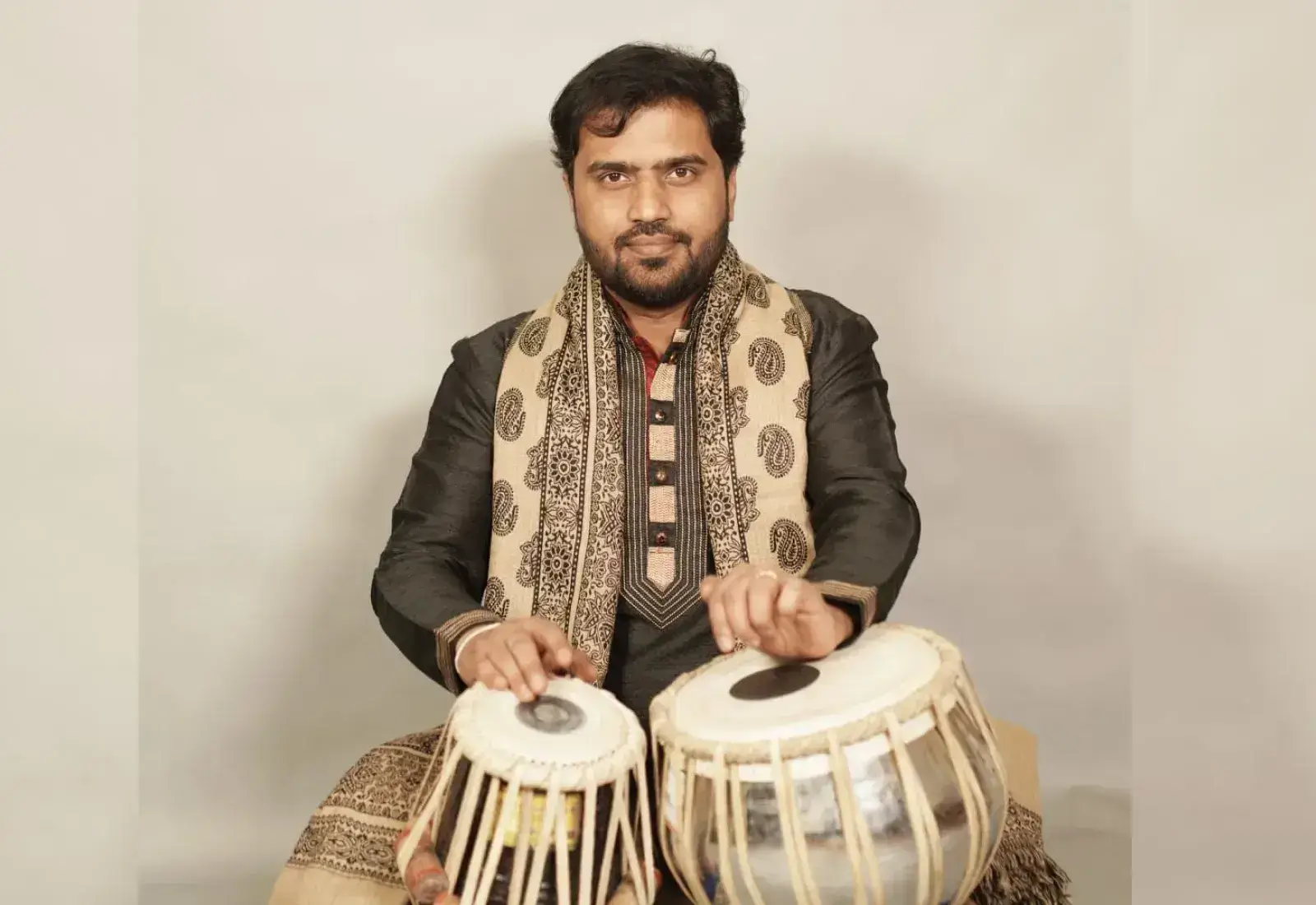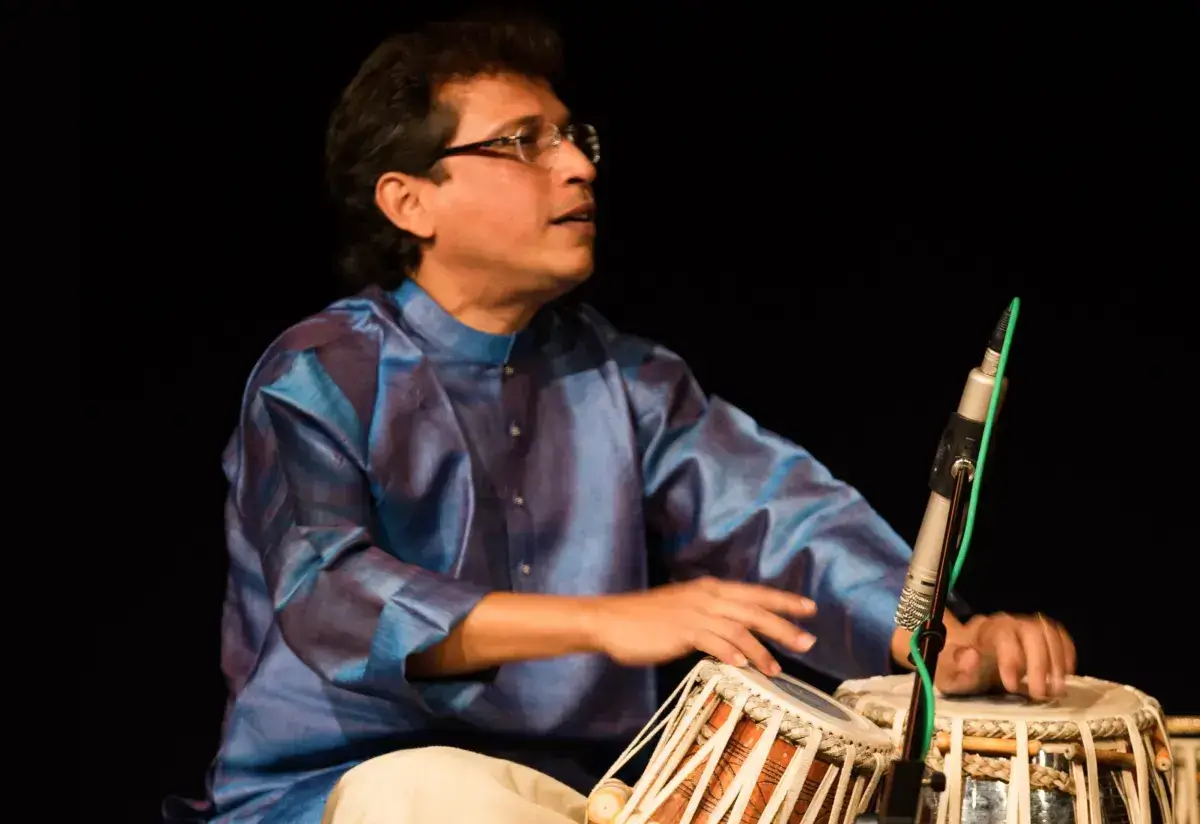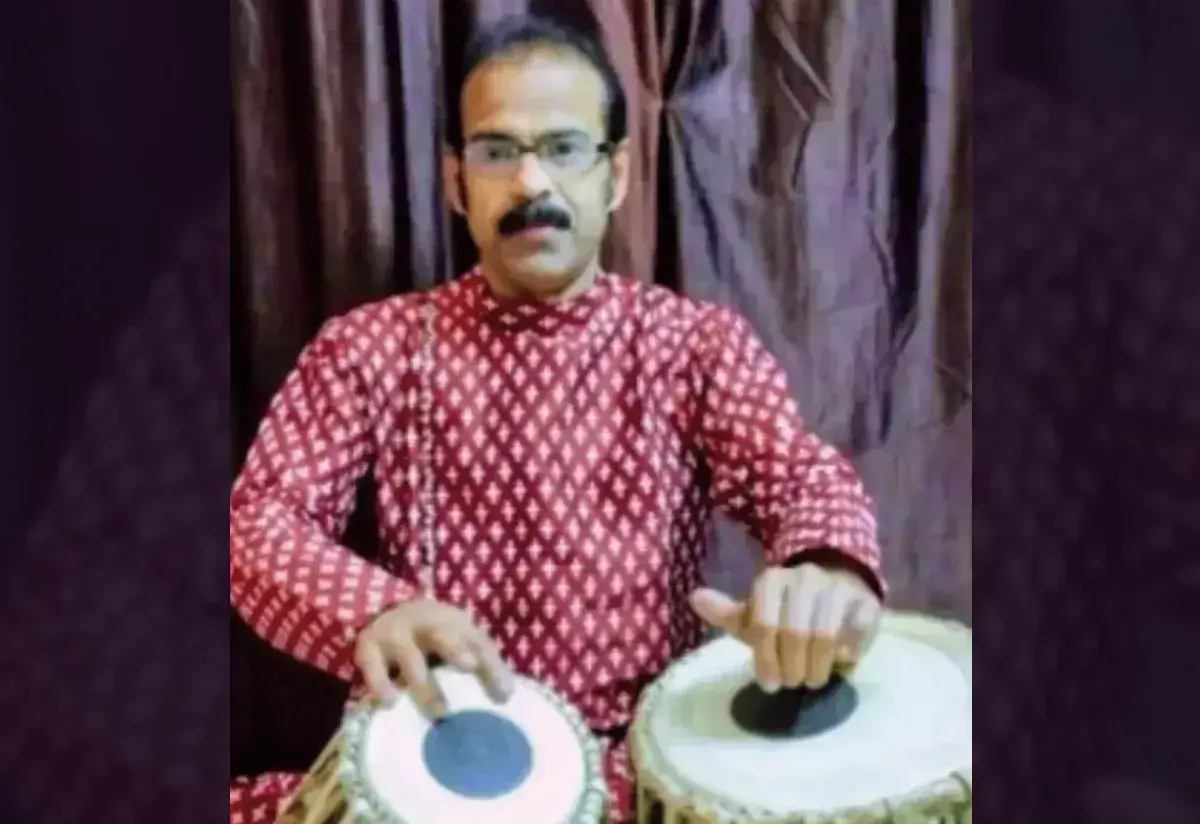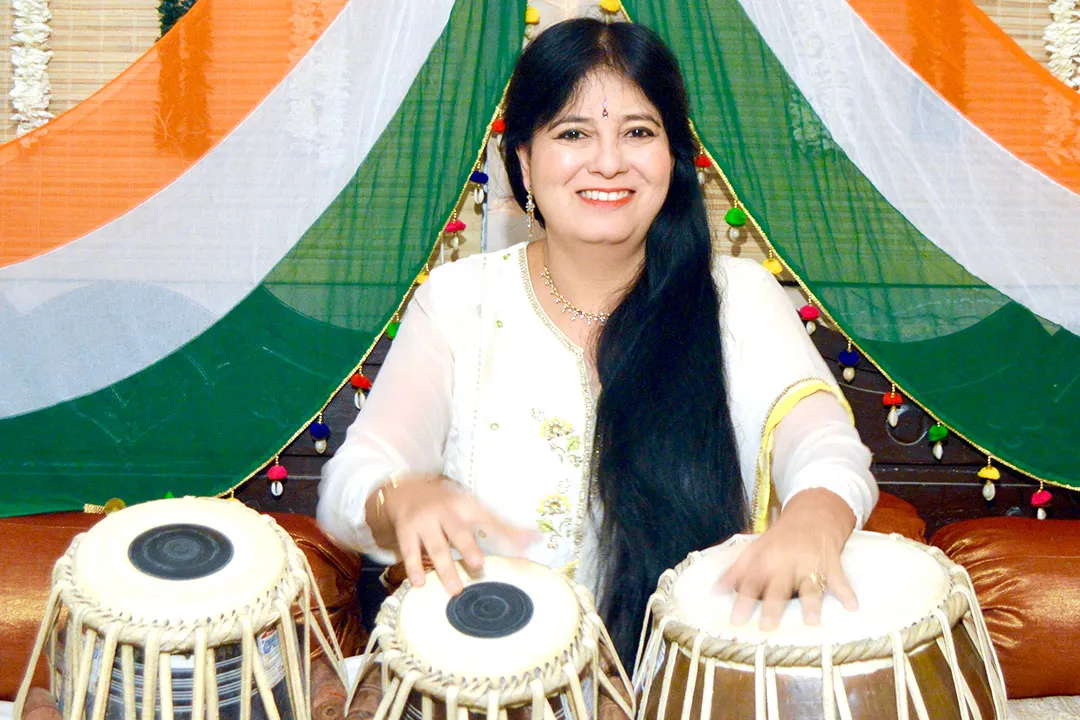Tabla Overview
Tabla is the most famous percussion instrument of India, finding popularity among many musical styles all over the world. The use of tabla has been particularly significant in Hindustani classical music for the last several hundred years and continues to be the most prominent classical rhythm instrument. While hand drums can be regarded as one of the more simplistic types of instruments, the tabla is rich in complexity and tradition.
The tabla instrument is a set of two drums, both with stretched membrane heads, closed resonating chambers, and barrel-shaped bodies. The smaller drum is called the dayan and it is played with the musician’s right (or dominant) hand. The bigger drum is called the bayan and it is played with the left. Pairs of drums vary slightly in size but most are around 15 to 20 centimeters in diameter and 25 to 30 centimeters in height. The barrels are made of hollowed-out wood or metal with goat skin stretched across the top in two layers.

The drum heads are secured in place with laced hoops and thongs along the edges and sides, and the tension is adjusted to affect a change of pitch in either drum. The dayan is the higher-pitched of the two and the bayan is a kettle drum that produces a deeper bass sound. The head of each drum has an area called the syahi, a circle of black paste that results in a clearer pitch and tone. The drums are positioned on chutta or bira—a cloth base in the shape of a ring that supports each drum. The tabla player sits in front of the drums with their legs crossed.
Like many classical instruments, tabla has a number of gharanas dedicated to it. Gharanas can be thought of like a school or house, where technique and tradition are passed down from teacher to student over many generations. Gharanas developed according to geography and are usually confined to one region of India. Historically, these were very traditional master/apprentice relationships but the barriers between different gharanas and the strict teaching formats have been relaxed in later years. There are six widely-accepted gharanas in tabla, each with a long and rich history of their own. Below are the six main tabla gharanas:
• Ajrara
• Benares
• Delhi
• Farrukhabad
• Lucknow
• Punjab
History of Tabla
Like many historical instruments, the tabla has disputed origins. While the name comes from the Arabic word for ‘drum,’ it is commonly believed that the tabla has ancient Indian origins and was renamed under Islamic rule. The tabla is considered a modern version of the ancient pushkara drums, small hand-held drums found in many temple carvings from the 6th and 7th centuries, and even as early as temple carvings from 500 BCE. The drawings showed drummers sitting before two separate drums and playing with their palms and fingers.
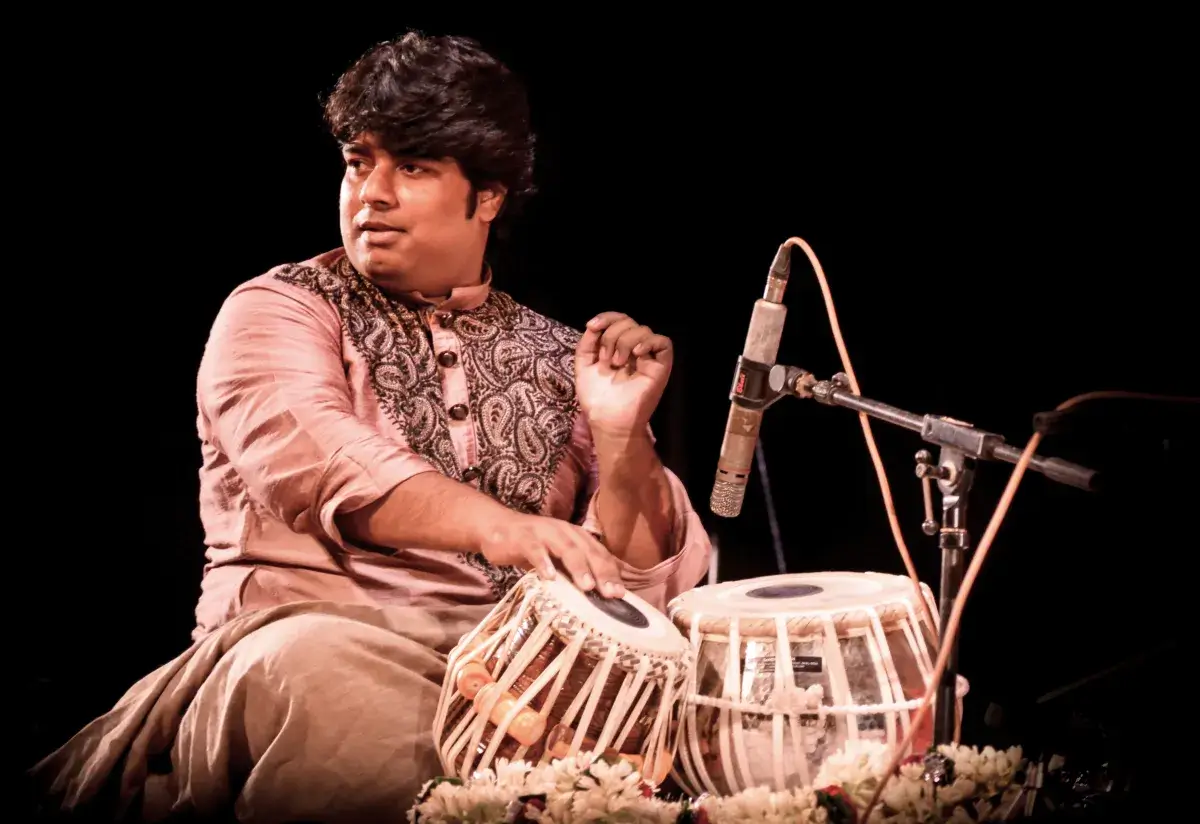
Textual evidence of drums similar to the tabla exist in Natyashastra, a Sanskrit text from 200 BCE, and just a few hundred years later there was the South Indian text Silappatikaram, which describes many different kinds of rhythm instruments. Drums and taals (rhythm) were mentioned in Vedas, as well. The tabla's exact origin is unknown and attributed to many but unquestionably, the modern tabla developed from a combination of ancient Indian drums.
What is recognised as the modern tabla came into use during the 18th century, which can be marked as the beginning of the main gharanas in tabla. It was during this era that the tabla became the primary rhythm instrument for Hindustani classical music. Over the years the drums have slowly evolved into the form that is popular today in both classical and popular music.
Types of Tabla
Tablas can vary in many ways, even being customised to individual players. Many elements of the drums can be altered to achieve a specific tone, making customization both easy and desirable. For professional players, exact specifications for tabla drums may be derived from their preferred gharana, particularly if certain measurements are well-suited to a specific technique.
The base material of the drums, the lacings, the thickness of the membrane—each affects the resonance and sound of the instrument. Many elements on the tabla must also be regularly maintained and replaced, particularly the drum heads. Learning how to maintain the drums is as essential to learning to play them. All parts of the drum will need to be replaced apart from the bases, which have been known to be passed down through generations.
Tabla Playing Techniques
The tabla has very specific techniques for playing, each derived from one of the six gharanas. There are also techniques specific to improvisation and alap that may differ from gharana techniques. Although not exactly the same, all of these techniques use bols to comprise taals. Bols are the individual strokes on the drums in the oral tradition of mnemonic syllables. Taal is the Indian system of rhythm with many established taals that measure musical time.
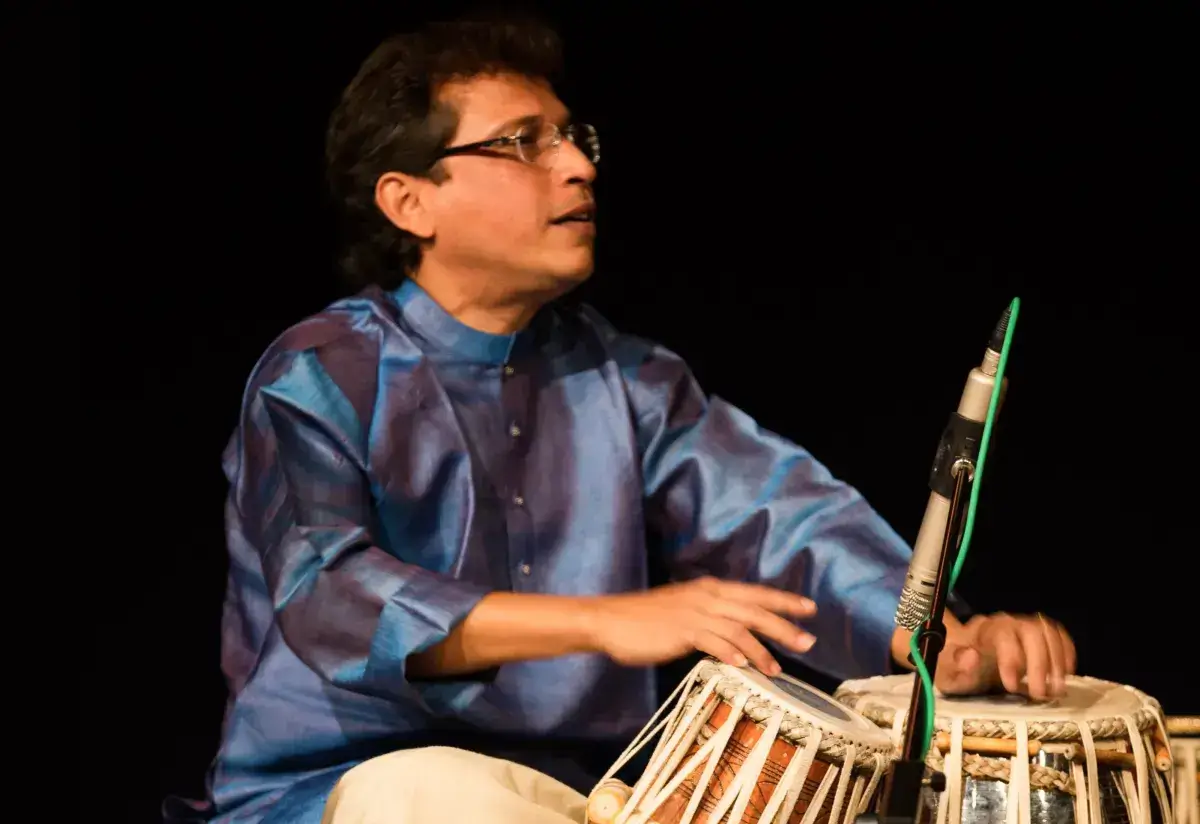
There are about 16 bols, including the most popular ta, ghe, dha, ka, na, and tu. The technique for each stroke varies by school but here is one example of how to execute ta on the dayan: striking the rim of the drum with the index finger while applying pressure to the edge of the syahi with the fourth finger.
There are many more tabla taals than can be counted. Like ragas for melody, each one has a specific structure that provides the foundation for classical music, both Hindustani and Carnatic tradition. Some of the most popular tabla taals are tintal, jhoomra, dhamar, and keherwa. The last one, for example, is comprised of eight beats in a four/four pattern.
It is rare that classical tradition includes written notation, so players must memorise bols and taals to be able to play compositions or improvise. While it is possible for some drums to be played instinctually or randomly, the hand positions that accompany each bol must be practised extensively for the tabla to be played correctly. Beginning students must be dedicated to tabla playing and tabla lessons.
Tabla Mechanics
While many percussion instruments and drums are unpitched, both drums of the tabla have a limited tuning range. This versatile ability makes the tabla unique and desirable as a rhythm accompaniment. To some degree, the size of the drum determines the range of pitch it is capable of—with larger or heavier materials producing a lower pitch and smaller or lighter materials producing a higher pitch.
The skins stretched across both drums are secured with loops of leather at high tension. Tuning blocks, called ghatta, are inserted into the loops of the dayan. The blocks are moved up or down to change the tension, and therefore pitch, of the drum head. The edge of the skin is secured with braided laces and these can be struck with a small hammer to fine tune the drums.
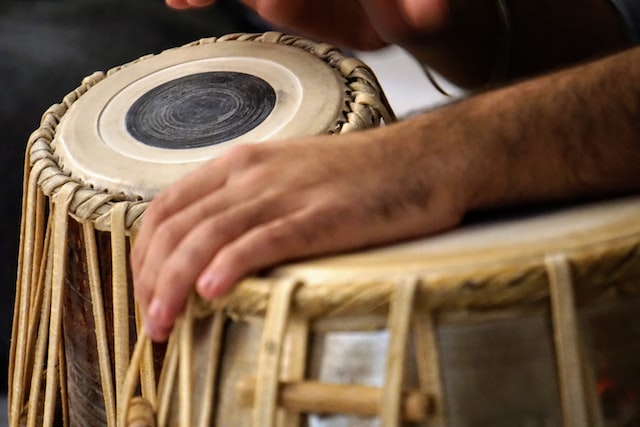
These tuning methods, in addition to playing techniques, allow for the pitch of the tabla to be altered depending on the composition. In the classical tradition, the smaller dayan is tuned to the ground note of the raga being played with the deeper bayan tuned an octave below.
The composition, size, and placement of the syahi, or tuning paste, also affects pitch and tone. The paste is typically a mixture of rice, water, and iron shavings and is applied by an expert. The mixture adds weight to the head of the drum, which alters the speed of vibration. The location of syahi on the drum head usually depends on the school of technique being used.
Notable Tabla Players
There are many exceptional tabla players, past and present. Below are some of the most talented and well-known modern day tabla players from around the world.
- Abhishek Chatterjee (View his course)
- Abrar Hussain
- Alex Acuna
- Alpesh Moharir (View his course)
- Aminah Chishti Qawwal
- Anindo Chatterjee
- Anuradha Pal
- Apurba Mukherjee (View his course)
- Bickram Ghosh
- Pandit Shankar Ghosh
- Pran Gopal Bandopadhyay (View his course)
- Rimpa Siva
- S. R. Chishti
- Sandeep Das
- Sandip Ghosh (View his course)
- Shailendra Mishra (View his course)
- Sourabh Goho (View his course)
- Sunayana Ghosh (View her course)
- Tirtha Bandyopadhyay (View his course)
- Unmesh Banerjee (View his course)
- Ustad Zakir Hussain
- Vijay Ghate


